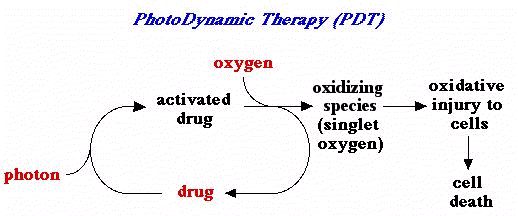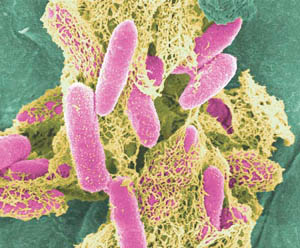
Antibiotic resistance is a worldwide challenge for which photodynamic inactivation (PDI) of bacteria provides an alternative to antibiotics. PDI employs a non-toxic dye, called a photosensitizer (PS), activated by low-intensity visible light and reacting with oxygen to produce a cytotoxic oxidizing species. PDI features the advantage of dual selectivity: (1) the PS selectively accumulates in the target cells, and (2) illumination can be directed only to the target cells. It is known that Gram (-) bacteria are resistant to many PS and difficult to kill. Our study sought to achieve PDI in Gram (-) bacteria and quantify the threshold dose required for PDI.

E. coli cells